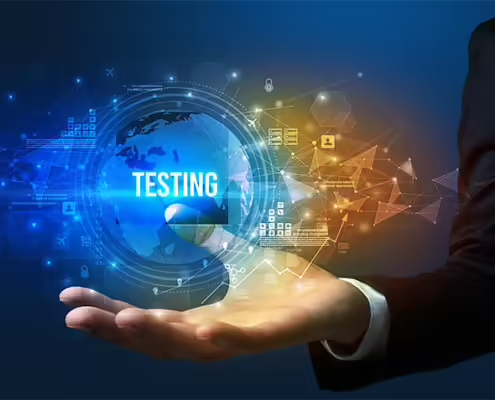
Goodbye Clunky Systems, Hello Modern Selling
It’s never easy to say goodbye, especially when it comes to a system that your organization has been using for years. Even though it’s tough to break historical ties with these well-known and adopted systems, they just aren’t going to cut it for what your customers need today. Because many of these systems were built in-house with or were taken from an existing CMS or ERP system, they lack the capabilities needed to serve modern customer needs. But you probably already know this and you likely aware that for B2B sellers to retain customers and survive amidst changing industry needs, you’ll need to start looking for a modern ecommerce solution that will be able to empower their business to make the customer experience their key brand differentiator.
Replacing a Legacy System and What To Look For
You know that it’s time to move on, but the question is, what do you actually need from your next providing? When you’re considering solutions, you need to focus on these 4 key capabilities of a modern eCommerce system:
1. Self-Service Account Management
2. Order Management
3. Buying Experience
4. Product Content Experience
1. Self-Service Account Management
Customers want freedom. In the increasingly independent DIY-ing, Googling, Youtubing world, customers are accustomed to helping themselves in order to reach a resolution. Clients not only desire but now expect to be able to manage their account tasks on their own without having to reach out to their account managers or customer success reps.
When customers are able to handle simpler tasks such as setting up their accounts, accessing contracts and invoices, and managing users, roles, and purchasing workflows entirely through a digital channel, or through self-service, they get the freedom they want and can use their time to take care of more important activities.
Self-Service Account Management in Action
SItuation:
Manufacturer needs access to a manual immediately.
A 3,000 person manufacturing plant in Italy utilizes specialized sorting machinery that they purchased five years ago. One of the key components stops working and presents a blinking error code in the middle of the night during a 24 hour frenzy to fulfill an order. The head engineer is confident he can fix it, but needs to know what the error code is telling him. They can’t wait for their account manager to get back online, they need access to a manual, fast.
Resolution:
They’re able to download through a self-service portal, without needing to email their account manager. Luckily, the maker of the machine utilizes self-service capabilities within their website and the head engineer is able to quickly navigate through the site to find and download the manual he needs, without even needing to wake up and contact the account manager.
2. Order Management
Take a look at where your sales team spends the majority of their time. Are they using their time to strategically build out customer relationships? Or is the bulk of their time dedicated to inputting and managing orders?
Instead of wasting time on manual tasks, order management can be automated and streamlined so that every step of the fulfillment process, from placing orders to tracking shipments, is done through a digital solution. Your sales team no longer needs to be order takers, but can have time to be true advisors to your customers.
But automation is not only helpful to sales teams! Efficient order management also helps buyers expedite their own buying process through features such as contract pricing and bulk and repeat ordering. Making the process easier and faster for buyers means that they spend less time trying to figure out how to place an order and more time doing job-critical tasks.
Order Management in Action
Situation:
Retailer wastes time placing the same order over and over again.
A large pet supply retailer in Australia puts in monthly orders with their manufacturer. Even though the head purchaser places the same order month after month, she has to go through the process of finding all the items she needs and add them one-by-one, since there is no easy way to automate the task.
Resolution:
The head purchaser is able to accelerate the purchasing process with reordering.
The manufacturer upgraded their eCommerce site to include reordering capabilities. This means that the head purchaser is able to easily see past orders, and now with a few simple clicks, she can place the same order again instead of needing to repeat the same process over and over every month.
What’s Driving The Shift?
External
Impact of COVID-19: The pandemic was a huge catalyst for many B2B companies. Business as usual has stopped, but businesses who have pivoted to a digital strategy now have the upper hand.
Changing B2B Buyers: 59% of all B2B buyers are millennials and close to 30% of them are lead buyers for their organization. These digital natives expect effortless e-commerce experiences, even when making B2B purchases.
Online B2B Marketplaces: Amazon business and consolidation in the industry make competing for market share and retain customers even more difficult, especially for electronics, autoparts, and general industrial industries
B2B organizations are facing pressure from all sides to deliver better experiences.
Internal
Strategic Direction from C-Levels: Savvy digital leaders understand the need and are driving digital change in their organizations.
Need for Digital Transformation: Companies are maximizing efficiency and gaining major competitive advantage through advanced technology and digital strategies. B2B E-commerce is a key component of this digital transformation.
Opportunity to Compete: Since many in the industry are lagging behind, there’s a big opportunity for companies to deliver superior customer experiences and gain a competitive edge.
B2B customers are looking to streamline their buying process to find the products they need in order to checkout quickly so that they can carry on with the rest of their tasks
3. Buying Experience
If order management is how customers place and receive their orders, then buying experience is everything before they get to that point. B2B purchasing experiences are already complicated as is. Unique requirements, multiple stakeholders, tailored contracts and, this experience is often made even more difficult with complicated systems and poor user experience.
B2B customers are looking to streamline their buying process to find the products they need in order to checkout quickly so that they can carry on with the rest of their tasks. To simplify the entire experience, sellers must consider how to:
Deliver personalized experiences to customers based on their unique business requirements and contracts
Tailor information and catalogs according to contracts, regions, and available products
Simplify search so that customers can easily see what products are available
Buying Experience in Action
Situation:
Manufacturer has difficulty displaying regional content and catalogs to the correct distributor.
Though this machinery manufacturer serves over 50 distributors in North America, they offer unique products only available to specific regions. But they’ve never had an efficient way of displaying what products are actually available to which distributors, making it very challenging for these distributors to know what they can actually purchase.
Resolution:
Buying experience is personalized by account and region.
With a modern ecommerce site, the manufacturer is now able to offer their distributors a personalized experience that will dynamically display products and content relevant to their region and account.
4. Product Content Experience
Ultimately, customers are most concerned about making the correct purchases. Their job depends on it.
Sellers can help their customers make the right purchases by providing detailed and helpful product content on the same platform that they purchase on. Content, such as advanced documentation, datasheets, videos, manuals, and compatibility information, will help inform customers before they make the transaction.
Providing a better product content experience reassures the customer of the purchase made, but also builds trust and transparency with customers.
Product Content Experience in Action
Situation:
Customers unable to identify the correct product to buy to meet their needs.
Historically, when customers requested more information on their products, this auto parts supplier would send catalogs and additional information either through email or mail. However, not only were these materials overly lengthy, they did not provide helpful imagery or descriptions for customers to easily identify what part they needed to purchase. After spending an excessive amount of time trying to figure out which parts they actually need, these frustrated customers would give up and call their account managers for help.
Resolution:
Buying process is accelerated by educating customers on the right products.
The supplier invested in a modern ecommerce platform that was able to provide a richer product content experience. Now when customers view products, they also are able to access a 360-degree view of the product, watch videos and tutorials, navigate through interactive diagrams, and download PDFs – all on the same purchasing platform.















